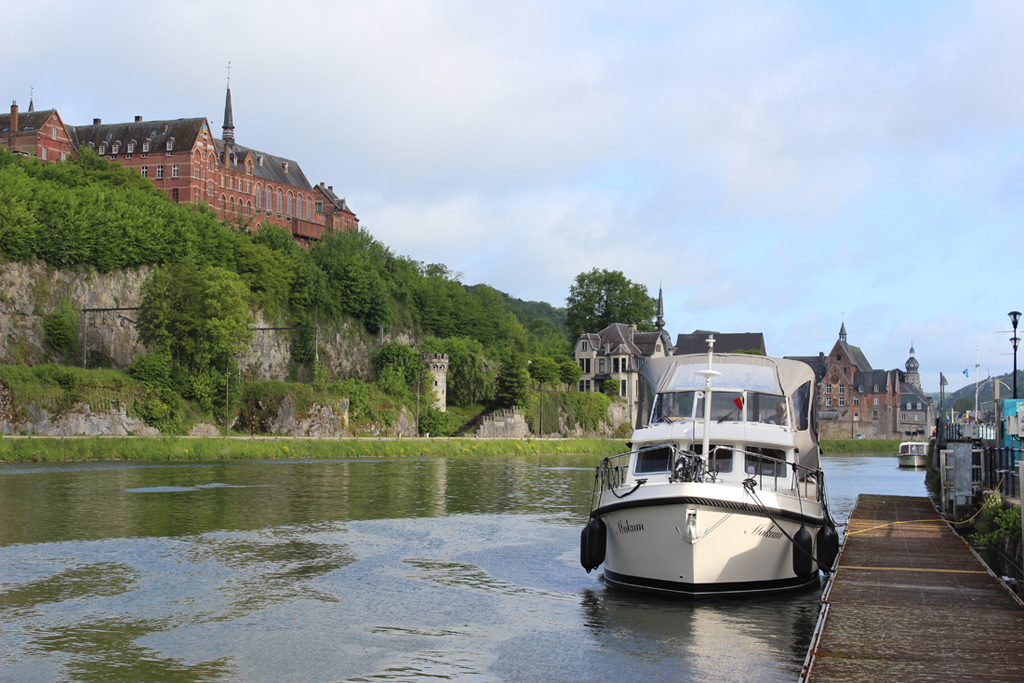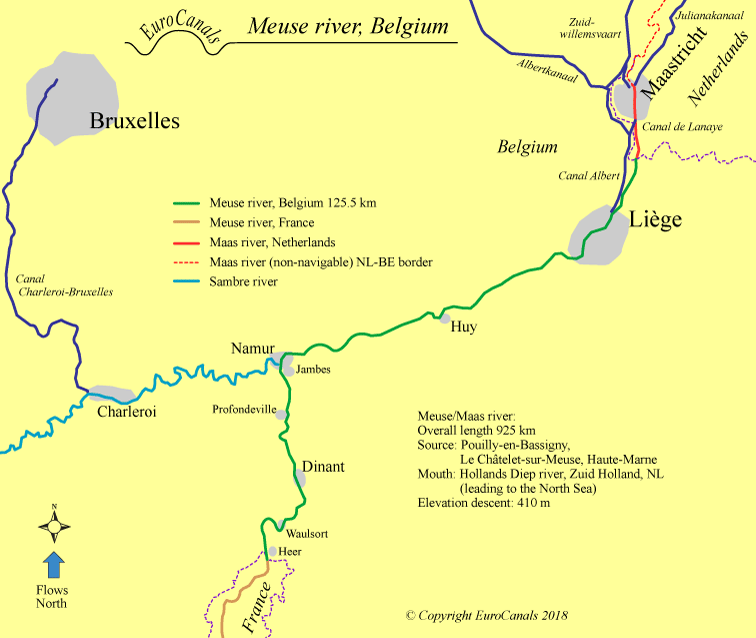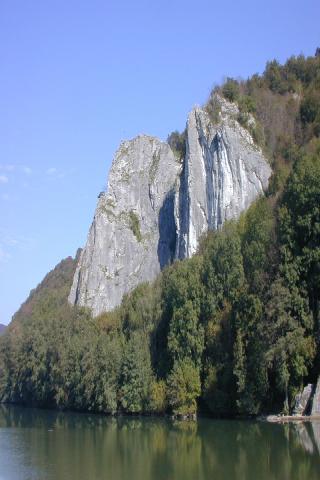The Meuse river in Belgium follows the western edge of the Ardennes forest, connecting the Netherlands and France (but not Germany,there are no waterways from Belgium directly into Germany or Luxembourg.The river flows north from France and through Wallonie as the Meuse; it becomes the Maas when it enters the Netherlands at Maastricht. It is a popular direct route for cruising between France and Netherlands, or for connections to central or western Belgium.

Meuse river, Belgium



Haute Meuse (Upper Meuse) - South of Namur the Meuse twists through the wooded cliffs of the Ardennes forest. Spectacular rock cliffs line the Meuse from Waulsort to Dinant; the citadel at Dinant is one of a series of fortresses on the cliffs. Namur, located at the junction of the Meuse and Sambre rivers, is the largest city in, and capital of, Wallonie.
Meuse moyenne (middle Meuse) - The section from Namur to Liège is a busy industrial area with heavy barge traffic, not very scenic. Huy, a very old town on the Meuse, is located halfway between Namur and Liege; at one time it was the location of the only bridge across the Meuse between those cities.
Liège - The Meuse is notable for its great width as it passes through Liége, giving an open feel to a city which otherwise consists of narrow streets and tall buildings. This is a historic and a very industrial city.
Basse Meuse - On the northern edge of Liège the rver is bypassed by Canal Albert and Canal de Lanaye. The Basse Meuse is navigable downstream of Barrage Monsin but blocked again by Barrage Lixhe.

Meuse river is described in the EuroCanals Guide:
Hello Tom, Thanks so much for all the work you have done over all these years and your freely offered support, it really is very much appreciated. So much so it has enabled a group of complete amateurs to take a 40 foot steel Dutch motor boat from Arnhem to very close to the Med, all via your guides, and we're still going!! Stay safe. John C.